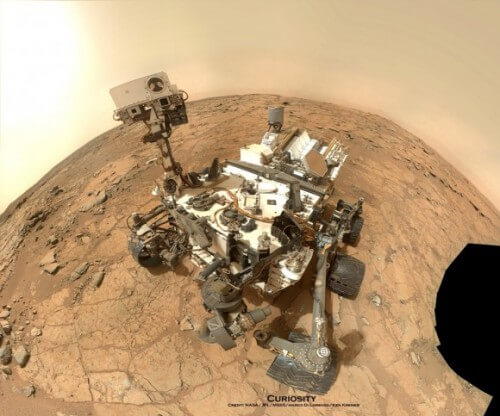A new book written by Rob Manning, who was the chief engineer of the Curiosity project, describes the technological challenges in development, the lessons learned from previous missions as well as lessons for the future.

A new book written by Rob Manning, who was the chief engineer of the Curiosity project, describes the technological challenges in development, the lessons learned from previous missions as well as lessons for the future.
For example, a lot of effort was invested in the development and testing of the lowering and landing unit (the EDL - as I remember it used several stages, including a parachute and then a Sky Crane that landed the vehicle using deceleration and braking rockets), and according to him, the issue of planning the vehicle's power system (based on a nuclear power source) was not There is enough time left for the exam. About a year before the launch date in 2009 when the details of the science instruments were released, they realized that the nuclear battery was too small and replacing it with a larger battery would make the vehicle too heavy to land.
One lesson learned about traveling on Mars is the danger of sharp rocks to vehicle wheels. These were designed to be relatively wide and thin so that the vehicle does not sink into the dirt as happened to the "Spirit" vehicle in 2010, but as a result they have a lower strength to the impact of the rocks.
In addition, he notes the lessons learned in terms of autonomous driving capabilities of a robotic vehicle, which receives a point it needs to reach, and plans its route there according to the terrain conditions it maps around it.
In the meantime, Curiosity carries out its mission successfully and is on the long way to Mount Sharp. - which is in the center of the crater where it landed - Gale Crater.
More of the topic in Hayadan:
For an extensive article on the website of the Samisonian Museum magazine
Thanks to Audi Lam

4 תגובות
Joseph
In 1961... The Mercury program ended in May 1963.
Joseph
in N.A.S.A. They lost the most important thing and that is vision and that is why she looks the way she does. NASA employees do beautiful things but it is not enough. It lacks people of stature who can turn an anemic organization into a roaring lion.
This should come as no surprise at all. There are thousands of constraints in building a satellite. For example: the computer will not be the most innovative but a relatively old computer adapted to the space conditions. The battery, the wheels, the engines, the laboratory components, all must adapt to the unusual conditions in space and on Mars and also survive the accelerations of launch and landing.
The parts are selected at the beginning of the project and by the time it reaches the launch stage they are considered obsolete, nevertheless they cannot be replaced because then you have to go back to the drawing board and start all over.
In addition, there are concerns and doubts about the expected points of failure. Sometimes they are misjudged and put effort in the wrong place.
The space travel phase lasts a long time, during which it is not possible to replace components, you can only update computer software.
That is: until the satellite reaches its destination, it should be considered obsolete, after all, this is the maximum that can be done. That's how it is in a high-risk project.
Therefore, there is no need to be excited and surprised. This is the right way.
The aforementioned vehicles brought us really new information that no Indian or Russian research spaceship brings us and brings us the capabilities of NASA. I don't understand why they were cut so thin in the current administration. As if we have already entered the Middle Ages and ISIS has already won.
1. The shuttles, which were overall successful but dangerous and complex, were shrunk to 30% of their size and turned into a secret spy plane that stayed in the air for two years.
2. The Atlas launcher project was canceled and privatized to traditional military industries such as Boeing and others. The mission to land a man on Mars is just getting further and further away. It seems that settling in space to save us from ourselves is necessary and all the technologies: production of oxygen in a safe concentration, production of water, production of energy - everything will be available for commercial recycling in the framework of green energy and green green systems: recycled: drinking, and more.
3. Today, NASA is engaged in various projects, but not in research like Kennedy's vision in 1964 and like a man on Mars.
4. As if the USA today has no money for such expensive research.